分科会概要
Overview of Working Group
分科会6
量子現象等の活用による未踏領域の創出
量子技術は、経済・産業・安全保障を飛躍的に発展させる可能性を持つ重要技術であり、長期的視点に立ち戦略的に推進することが極めて重要である。
本分科会では、次世代の情報処理・通信の基盤となりうるネットワーク型量子コンピュータの実現に必要な量子技術(例:量子メモリ、汎用型量子コンピュータ、量子中継技術、量子ネットワーク等)を特定し、MS目標を検討する。
- 主 査:
- 荒川 泰彦
東京大学 ナノ量子情報エレクトロニクス研究機構 特任教授
- 副主査:
- 北川 勝浩
大阪大学 大学院基礎工学研究科 教授
【関連する目標例】
- ・「2050年までに汎用型量子コンピュータネットワークを実現」
【登壇者一覧】
講演資料の無断転載・複製を禁じます
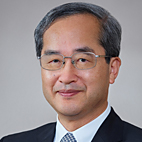
PROFILE
Yasuhiko Arakawa received his PhD degree from The University of Tokyo in 1980 and, in the same year, he joined The University of Tokyo as an Assistant Professor. He was promoted to an Associate Professor in 1981and became a full Professor at Institute of Industrial Science, The University of Tokyo in 1993. From 2006 to 2017, he was the Director of the Institute for Nano Quantum Information Electronics, The University of Tokyo. In 2018, he became a Specially-Appointed Professor and a Professor Emeritus at The University of Tokyo. He is currently a Program Director of the MEXT Q-LEAP and the Supervisor of the CREST Quantum Techlogy. His main research field is quantum dot nanophotonics, including physics of the quantum dot, quantum dot lasers, single photon sources, quantum dot cavity-QED and silicon photonics. He is a Foreign Member of the US National Academy of Engineering (MAE) and the Past President of International Commission for Optics (ICO).
He received numerous awards, including Leo Esaki Award in 2004, IEEE/LEOS William Streifer Award in 2006, Fujiwara Award in 2007, IEEE David Sarnoff Award in 2009, Prime Minister Award in 2009, the Medal with Purple Ribbon in 2009, C&C Prize in 2010, Heinrich Welker Award in 2011, OSA Nick Holonyak Jr. Award in 2011, the Japan Academy Prize in 2017 and IEEE Jun-ichi Nishizawa Medal in 2018.
北川 勝浩 (分科会副主査)/ 大阪大学 大学院基礎工学研究科 教授
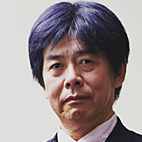
PROFILE
Masahiro Kitagawa is a Professor of Graduate School of Engineering Science, and the Director of Quantum Information and Quantum Biology Division, Institute for Open and Transdisciplinary Research Initiatives, Osaka University. He received BEng in ’81, MEng in ’83, and Ph.D. in quantum physics in ’94 from Osaka University. He was a research staff at NTT Basic Research Laboratories from ’83 to ’93 and established Squeezed Spin States.
He has been a faculty of Osaka University since ’93 and a Professor since ’03. He has served as Research Director of JST/CREST Projects; Nuclear Spin Network Quantum Computers (’99-05), Molecular Spin Quantum Computers (’05-11), and, Hypersensitive MRI/NMR by means of Room Temperature Hyperpolarization and Quantum Coding (’16-22). He also served as the Chairman of Technical Committee on Quantum Information Technology (QIT), The Institute of Electronics, Information and Communication Engineers (’11-12). He is an advisory board member of quantum information technology of MEXT Quantum Leap Flagship Program (Q-LEAP) since 2018.
He is a founder and the representative director of Quantum Research Institute. He is a member of The Physical Society of Japan and a life member of American Physical Society. His research interest includes quantum measurement, quantum information, quantum computing and quantum algorithms.
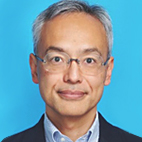
PROFILE
Yasunobu Nakamura studied physical properties of high-temperature superconductors and received BSc in Department of Applied Physics, The University of Tokyo in 1990 and MSc in Superconductivity Research Course, The University of Tokyo in 1992. He joined Fundamental Research Laboratories of NEC Corporation in 1992 and started working on mesoscopic electronic devices. In 1999 he demonstrated the first coherent control of a superconducting qubit. During 2001-2002, he spent a year in Department of Applied Physics, Delft University of Technology as a Visiting Researcher. He received D. Eng. from Department of Applied Physics, The University of Tokyo in 2011. He moved to the current position in Research Center for Advanced Science and Technology (RCAST), The University of Tokyo, in 2012. He is also affiliated to RIKEN Center for Emergent Matter Science as a Team Leader of Superconducting Quantum Electronics Team since 2014. He has been the Director of ERATO Macroscopic Quantum Machines Project of Japan Science and Technology Agency (JST) since 2016 and the Project Leader of Q-LEAP Flagship Project on Superconducting Quantum Computers since 2018. His current research interests are quantum information processing using superconducting circuits, microwave quantum optics, and hybrid quantum systems. He has received Sir Martin Wood Prize and Nishina Memorial Prize in 1999, Agilent Technologies Europhysics Prize in 2004, Simon Memorial Prize in 2008, Leo Esaki Prize in 2014, and Japan Society of Applied Physics Outstanding Achievement Award in 2019.
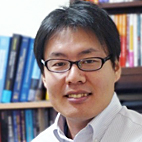
PROFILE
Keisuke Fujii is Professor of Graduate School of Engineering Science, Osaka University. He received his PhD from Kyoto University (2011). After PostDoc at Osaka University (2011-2013), he has since held positions at The Hakubi center for advanced research, Kyoto University (Assistant Professor, 2013-2016), Photon Science Center of The University of Tokyo (Assistant Professor, 2016-2017), Department of Physics, Graduate School of Science, Kyoto University (Associate Professor, 2017-2019). He is also Chief Technical Adviser of QunaSys Inc.. His research interests focus on quantum computing, quantum error correction, quantum algorithm and quantum computational complexity.
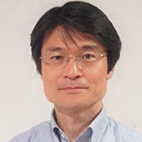
PROFILE
Hideo Kosaka received his Master of Science degree from Kyoto university in 1989 and, in the same year, he joined NEC Fundamental Research Laboratories. He received his PhD degree from Kyoto University in 1999. He has been a visiting researcher at California State University, Los Angeles (UCLA) from 2000 to 2002. He became an Associate Professor at Research Institute for Electrical Communication (RIEC) of Tohoku university in 2003. He became a full Professor at Yokohama National University in 2014. He is also a Principal Investigator at Institute of Advanced Sciences (IAS), Yokohama National University in 2018. He is an advisory board member of MEXT - Quantum Leap Flagship Program and Quantum Internet Task Force.
Jacob M. Taylor / Assistant Director for Quantum Information Science, White House Office of Science and Technology Policy, USA
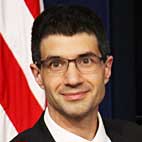
PROFILE
Jake Taylor joined the White House Office of Science and Technology Policy in December 2017 to help lead the U.S. effort to advance American leadership in quantum information science. While at OSTP, he has overseen the passage of the National Quantum Initiative Act, signed into law on December 21, 2018; helped create the U.S. national strategy for quantum information science published in September, 2018; launched two National Science and Technology Council subcommittees to coordinate quantum-related research and development across the United States; and formed the National Quantum Coordination Office under OSTP’s leadership.
While not on detail to OSTP, Taylor is a NIST Fellow at the National Institute of Standards and Technology (NIST), co-director of the Joint Center for Quantum Information and Computer Science (http://quics.umd.edu) at the University of Maryland, and a Joint Quantum Institute (http://jqi.umd.edu) Fellow. His research group investigates the fundamental limits of quantum devices for computation and communication. He received an AB in Astronomy & Astrophysics and Physics at Harvard in 2000 and then spent a year as a Luce Scholar at the University of Tokyo. Taylor returned to Harvard for his PhD in the group of Mikhail Lukin in 2006, exploring approaches to quantum computing and fault tolerance using spins in quantum dots. He went on to a Pappalardo Fellowship at MIT, working in both the Condensed Matter Theory group and the Center for Theoretical Physics, and during that time co-invented diamond-based magnetometry. In 2009 Taylor joined the Joint Quantum Institute and NIST, and in 2014 started the Joint Center for Quantum Information and Computer Science. He is a Fellow of the American Physical Society, and recipient of the Newcomb Cleveland Prize of the AAAS, the Samuel J. Heyman Service to American “Call to Service” medal, the Silver Medal of the Commerce Department, the Presidential Early Career Award for Science and Engineering, and the IUPAP C15 Young Scientist prize. He can be found on twitter @quantum_jake
Tommaso Calarco / Director, Institute of Quantum Control, Peter Grünberg Institute Forschungszentrum Jülich
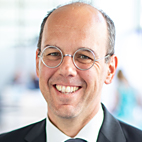
PROFILE
Tommaso Calarco is the director of the Institute for Quantum Control of the Peter Grünberg Institute at Forschungszentrum Jülich. He received his PhD at the University of Ferrara in 1998 and started to work as a postdoc in the group of P. Zoller at the University of Innsbruck. He was appointed as a Senior Researcher at the BEC Centre in Trento in 2004 and as a Professor for Physics at the University of Ulm in 2007, where he later became the director of the Institute for Complex Quantum Systems and of the Centre for Integrated Quantum Science and Technology. He authored the Quantum Manifesto in 2016, which led to the European Commission’s Quantum Flagship Initiative. He is currently the Chairman of its Quantum Community Network.
Alexander D. Cronin / Senior Quantum Coodinator, White House Office of Science and Technology Policy, USA
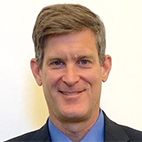
PROFILE
Alexander Cronin joined the United States National Quantum Coordination Office (NQCO) shortly after it was established, in March, 2019, by the Office of Science and Technology Policy in response to the National Quantum Initiative Act. Cronin works at the NQCO on detail from the National Science Foundation (NSF) where he is a Program Director for the Quantum Information Science program and the Atomic Molecular and Optical Physics Experiment program in NSF’s Physics Division. Cronin received a BS in Physics from Stanford University in 1993, a PhD in Physics from the University of Washington in 1999, and was a postdoc at MIT from 1999-2002. Cronin is a Professor at the University of Arizona in the Department of Physics with a joint appointment in the College of Optical Sciences. Cronin’s research team uses an atom interferometer to measure atom-surface van der Waals interactions, atomic polarizabilities, and tune-out wavelengths; and to study quantum decoherence processes. Cronin has authored over 40 articles on atom optics and another 20 on solar power plants. Cronin has won several teaching awards including: the University of Arizona Koffler Prize for teaching in 2009; the Early Career Distinguished Teaching Award from the UA College of Science in 2008; and the Outstanding Undergraduate Teaching Award from the UA Department of Physics in 2005. In 2019, Cronin received an NSF Director’s Award for his work with the NSF Quantum Leap Working Group.
石内 秀美 / キオクシア株式会社 技術改革推進部部長付
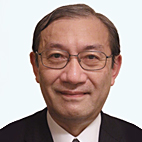
PROFILE
Hidemi Ishiuchi received the B.S. and M.S. degrees in physics at the University of Tokyo in 1978 and 1980, respectively. Since he joined Toshiba Corporation in 1980, he has been working on DRAM development. From 1988 to 1989, he has been at Stanford University as a Visiting Scholar to study BiCMOS technologies. From 1993 to 1995, he has been at IBM East Fishkill as a member of 256M bit DRAM joint development project among IBM, Siemens, and Toshiba.
From 1996 to 2006, he has been working on development of advanced CMOS technologies including SOI MOSFETs, RF mixed signal CMOS technology, embedded DRAM technology, TCAD (Technology CAD), etc.
In 2007, he moved to Corporate Research and Development Center, working on semiconductor devices and HDD. He was Director of Center for Semiconductor Research and Development Center in 2008 and Chief Technology Executive of Semiconductor Company from 2009 to 2013.
From 2016 to 2019, he has been President of EIDEC, a consortium for R&D of semiconductor process technology including EUV (Extreme Ultra Violet) lithography.
Since 2019, he has been Assistant to General Manager of Technology and Innovation Division, Kioxia Corporation.
Mr. Ishiuchi is a member of the Japan Society of Applied Physics, the Physical Society of Japan, and IEEE.
井元 信之 / 大阪大学 先導的学際研究機構 特任教授
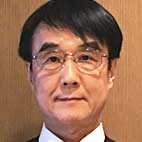
PROFILE
Professor Imoto graduated from the University of Tokyo in 1975 and received a master's degree from the Graduate School of Engineering in 1977. In the same year, he joined NTT Basic Research Laboratories, where he was engaged in research on optical fiber communications and quantum nondemoltion detection. In 1990, he wrote a doctoral dissertation on quantum nondemoltion measurement of photons and received a doctorate from the University of Tokyo. In 1990, he stayed in the laboratory of Professor Rodney Loudon at the University of Essex. The one-year stay in the UK allowed him to discuss with many researchers at the dawn of quantum computing and quantum cryptography. Returning to Japan, he set up a research group for quantum information processing in NTT. He became a professor at the Graduate University for Advanced Studies (SOKENDAI) in 1999, and became a professor at the Graduate School of Engineering Science at Osaka University in 2004. He is currently appointed as a specially appointed professor at Osaka University and a project researcher at the University of Tokyo. He consistently promoted both theoretical and experimental research and published about 300 papers. His publications appear in high impact journals such as Nature, Nature Photonics, Nature Communications, PRX, PRL, and so on. His specialties include quantum information processing, optical fiber communications, and quantum electronics.
西野 哲朗 / 電気通信大学 大学院情報理工学研究科 教授
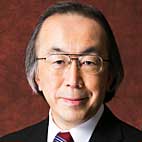
PROFILE
He joined Tokyo Research Laboratory, IBM Japan (1984-1987), Tokyo Denki University (1987-1992), Japan Advanced Institute of Science and Technology, Hokuriku (1992-1994) and The University of Electro-Communications. His main interests are quantum complexity theory and artificial intelligence.





